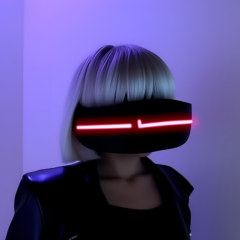When applying certain filters in GIMP, such as Gaussian Blur, you may encounter the “Abyss Policy” options: None, Clamp, White, and Black. These options determine how GIMP handles the pixels at the edges or boundaries of an image during the filtering process. The “abyss” refers to the undefined area outside the boundaries of the image, which can become relevant when applying filters that extend beyond the edges of the image.
Abyss Policy Options in GIMP:
- None
- Description: When the “None” option is selected, GIMP does not attempt to fill in or extend the image beyond its edges. This means that the filter will not consider any data beyond the image boundaries, and as a result, the filter might not be fully applied near the edges of the image.
- Effect: This can lead to artifacts or incomplete filtering near the edges, such as a noticeable difference in the blur effect between the center of the image and the edges.
- Use Case: Choose “None” when you want to avoid introducing any assumptions about the edge pixels, or when edge artifacts are not a concern.
- Clamp
- Description: The “Clamp” option instructs GIMP to extend the edge pixels outwards, effectively “clamping” the last row or column of pixels along the edge to fill the abyss. The value of the edge pixel is repeated across the abyss.
- Effect: This can create a smoother transition at the edges of the image because the filter uses the edge pixel’s value to simulate continuity. However, it might cause the edges to appear artificially extended or smudged, depending on the filter applied.
- Use Case: Use “Clamp” when you want to avoid abrupt changes or artifacts at the edges, and when the extended edge pixel values will blend reasonably well with the rest of the image.
- White
- Description: When “White” is selected, GIMP fills the abyss with white pixels. The filter then processes the image as if the area beyond the edges is completely white.
- Effect: This can cause a bright halo or a sharp white edge to appear near the borders, particularly when applying blurs or other filters that average pixel values.
- Use Case: “White” can be useful when the image will be placed on a white background, or when the effect of adding white is desirable or can be easily blended with the final composition.
- Black
- Description: The “Black” option fills the abyss with black pixels. The filter then processes the image as if the area beyond the edges is entirely black.
- Effect: This can create a dark halo or a sharp black edge around the borders, which might be noticeable depending on the type of filter and the contrast between the image and the black abyss.
- Use Case: Use “Black” when the image will be placed on a black background, or when you want the effect of a darkened border or are working with dark-themed designs.
Practical Implications:
- Edge Artifacts: Choosing “None” might result in visible artifacts or incomplete filter effects near the edges of the image. “Clamp,” “White,” and “Black” are used to mitigate these effects by defining how the edges are handled.
- Background Integration: If the image will be integrated into a specific background (white or black), using the corresponding abyss policy can help the image blend better with that background.
- Filter Effects: Filters that rely on neighboring pixel values, like Gaussian Blur, are directly influenced by the abyss policy. The choice of policy can significantly affect the visual result near the image’s borders.
Summary:
- None: The filter is applied without considering the pixels beyond the edge, which may cause incomplete effects at the boundaries.
- Clamp: The edge pixels are extended outward, providing a continuous effect but potentially smudging the edges.
- White: The abyss is filled with white, which may create bright edges or halos.
- Black: The abyss is filled with black, potentially creating dark edges or halos.
Best Practices:
- Use Clamp for smooth transitions at the edges when you need a continuous effect.
- Choose None if you want the most accurate filter application without any assumptions about the edges, but be prepared for potential artifacts.
- Opt for White or Black based on the background color of the final composition or when you want to introduce a specific border effect.
